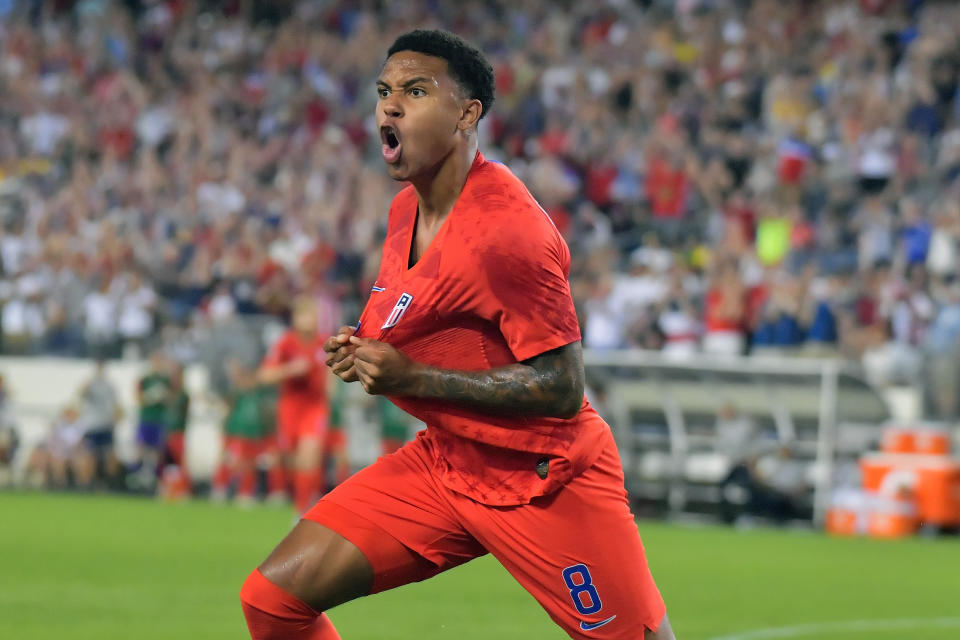Gregg Berhalter explains the USMNT's role in player development

Last week, United States men’s national team coach Gregg Berhalter went on SiriusXM show Counter Attack and, in response to a question from co-host and former U.S. defender Janusz Michallik about the USMNT’s role in making players better, gave the following answer:
“We’re not responsible for developing players — the responsibility for the most part falls to the clubs,” Berhalter said. “We’re not together that often that we can really develop a player.”
On the surface, it was a perfectly reasonable reply. Most national team managers, who only get to work in-person with their squads for three or four 10-day windows per year outside of international tournaments such as the World Cup, would say some version of the same. Context is also important. The quote came as some impatient U.S. fans had been clamoring for the promotion of several youth national teamers who have yet to make a mark professionally.
Berhalter’s words were still interesting, though. Because since he accepted the challenge 10 months ago of trying to steer the U.S. program back to respectability after its epic failure to qualify for the 2018 World Cup, the former Columbus Crew boss has often spoken of trying to improve the quality of the American players, both individually and as a group.
“To me, it’s about developing players,” Berhalter said, explaining why his team insisted on playing though Mexico’s eight-man press during last month’s 3-0 friendly loss in New Jersey.
During a conversation with Yahoo Sports on Monday, Berhalter took the time to drill down on what could be seen as conflicting messages.
“I think the starting point for me is looking at the level of the player and saying, ‘Is this player a national team-level player right now?’” Berhalter said. “If the answer is no, I’m not going to be able to get him to the national team standard. He’s going to need to do that through playing games with his club.
“If the answer is yes,” Berhalter continued, “now it’s about the specifics of developing him within our system, what he still needs to work on despite already being a fantastic player.”
In other words, you can’t make a national team player. But you can make a national team player better.

The example Berhalter used after the Mexico game was midfielder Weston McKennie, a 21-year-old Champions League veteran with Schalke in the German Bundesliga. Schalke plays differently than the U.S. does, and as a result, Berhalter asks McKennie to do different things.
For other players, the transition to the national team is smoother because their roles don’t really change when they travel between club and country.
“Sergino Dest plays the same way with Ajax,” Berhalter said, speaking of the 18-year-old Dutch-American defender who won’t participate in the CONCACAF Nations League match Friday against Cuba [7 p.m. ET, FS1] in Washington, D.C., or at Canada next week. “Even though he’s young, it’s relatively easy for him to pick up what we’re doing.
“You have other guys like Weston that don’t necessarily play like that with their clubs. But because they’re high-level players, you would expect that they can take on information, take on concepts. That’s why they got to the level they’ve gotten to.”
Like most of his teammates, McKennie struggled against El Tri’s relentless chasing. Berhalter is hoping that the experience pays off this month, especially against Canada. While the Cubans will likely sit back defensively, allowing the U.S. to control the match, Canada’s hopes of reaching the final round of World Cup qualifying for the first time since 1997 could hinge on the Oct. 15 contest in Toronto. “It’s going to be interesting to see how they approach the game,” Berhalter said.
If Canada comes out hard, the U.S. will be prepared, or at least more prepared than they were last month. Berhalter pushed back against the notion that his system is too complex to implement during short international windows.
“The difficulty learning the system, I think that’s a little bit exaggerated,” he said. “It’s just time together and layering. We’re focusing on certain concepts in one camp and then we’re building in the next camps. It has a multiplying effect where the guys will be able to understand it as we go.”
Competition also raises an athlete’s level, the international game providing exposure to different coaches, teammates, stakes, styles and experiences.
For Berhalter, that process doesn’t stop when a particular camp ends. He and his staff remain in frequent communication with players. They’ve also been actively working with their clubs, sharing information so that both teams and the player benefits.
“It’s a collaboration,” Berhalter said, admitting that some clubs are more open to it than others. “When a guy is at a high level, we want to work on specific things with him, together with his club, to get him better. I’m the type of coach that wants to create an environment where we’re always looking to improve. We make a concerted effort and say, ‘OK, this guy is a top-level player. How do we make him a world star?’
“That,” he added, “I think is development as well.”
More from Yahoo Sports:

